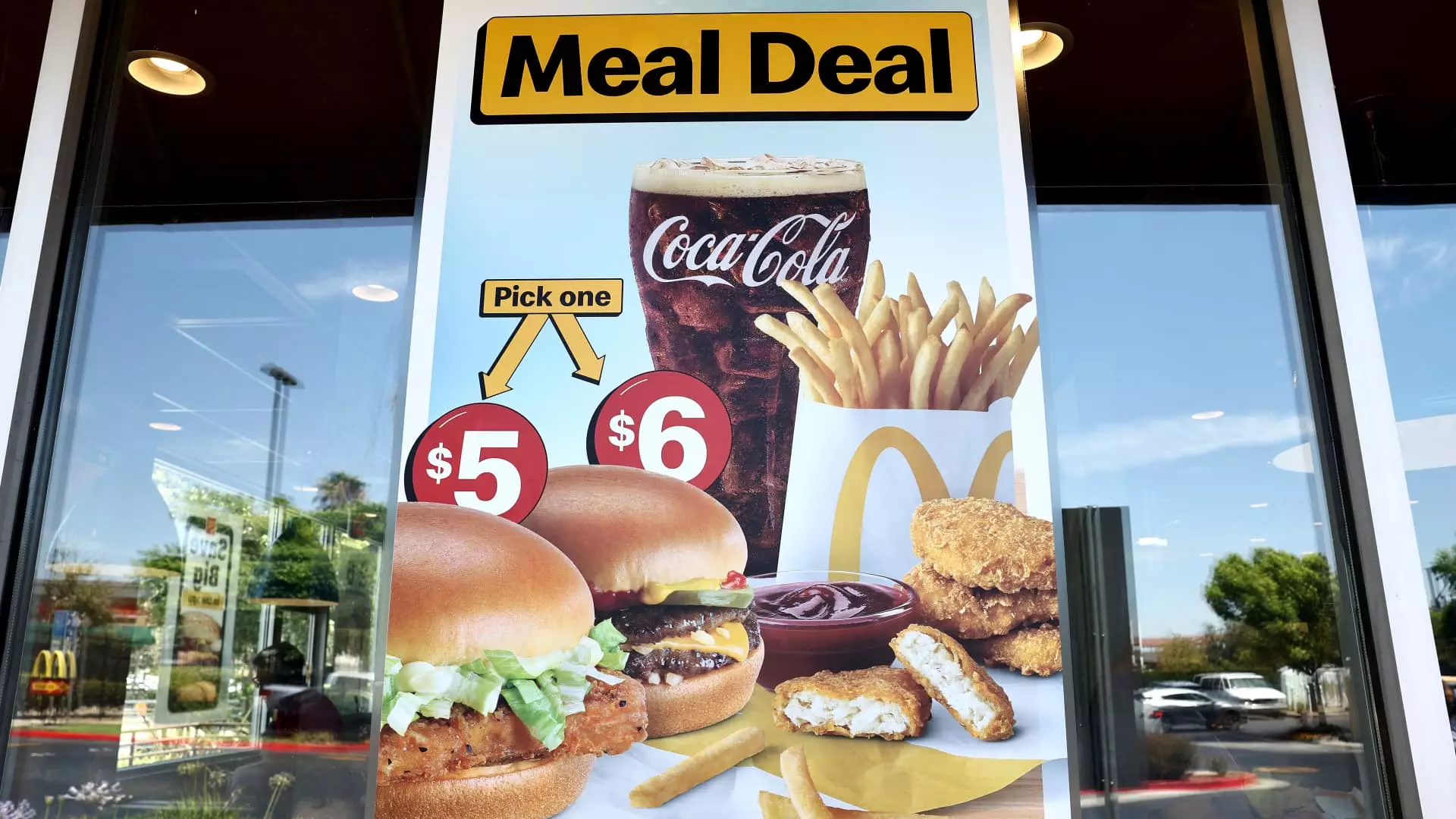In recent years, fast-food chains have been experiencing a shift in consumer behavior as more and more people are cutting back on their spending, particularly in the fast-food sector. The era of $5 footlongs at Subway is long gone, and now other chains are attempting to win over customers with meal deals priced at $5. This change comes at a time when many restaurant companies are reporting a decrease in customer traffic and sluggish sales, except for a few exceptions like Chipotle.
To combat this trend, chains such as McDonald’s, Taco Bell, Burger King, and Wendy’s have introduced or re-introduced meal deals priced at $5. While McDonald’s has seen an increase in traffic as a result of these promotions, investors are not expecting a significant rise in sales revenue. The escalating menu prices in the fast-food sector have driven more than 60% of consumers to reduce their spending on fast food, as they perceive it to be too expensive. This has created an opportunity for casual-dining chains to capture market share from fast-food establishments by emphasizing their value propositions.
The market sentiment towards fast-food chains has taken a hit, with shares of companies like McDonald’s, Burger King parent Restaurant Brands International, and Wendy’s experiencing double-digit decreases in value this year. Contrastingly, the S&P 500 has seen a rise of 14%, indicating a lack of confidence among investors in the fast-food sector’s ability to bounce back. Analysts are predicting that the upcoming second-quarter earnings reports from major chains may fall short of expectations, putting further pressure on stock prices.
As restaurants face the challenge of rising prices and dwindling customer traffic, they are turning to value meals and discounts as a tool to attract customers. The $5 meal deals are not only aimed at increasing foot traffic but also at encouraging customers to spend more by adding extra items to their orders. However, the success of these promotions hinges on the ability of restaurants to upsell additional items and convert deal-seekers into higher-paying customers. Without this conversion, the discounts could erode profits and prove unsustainable in the long run.
While restaurants are implementing value meal deals to boost sales, franchisees are becoming increasingly resistant to these strategies as they fear a negative impact on their profits. Franchisees now wield more power to push back against parent companies’ discount-driven marketing campaigns, with some even forming associations to resist unpopular deals and renovation plans. The skepticism from franchisees, in addition to investor concerns, poses a significant challenge for fast-food chains as they navigate the competitive landscape of the industry.
The $5 fast-food wars reflect the intense competition and changing consumer preferences within the restaurant industry. While value meals and discounts may attract customers in the short term, the long-term sustainability of these strategies remains uncertain. Fast-food chains must find a delicate balance between driving traffic, increasing sales, and maintaining profitability to thrive in an increasingly challenging market environment.

Leave a Reply